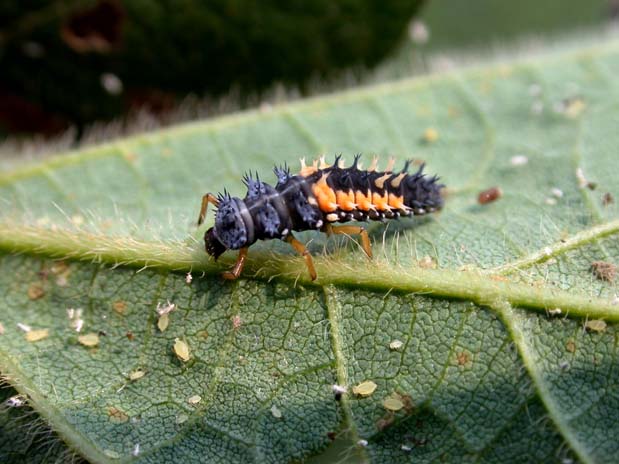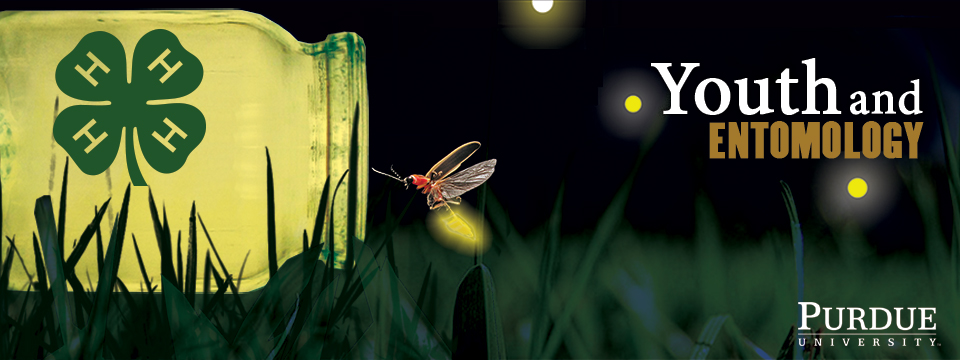

|
|
Lady Beetle larva
(John Obermeyer, Purdue University) |
|
Common Name: Lady Beetle - larva
See also: adult | damage Scientific Name: Coccinellidae: several species Status: very beneficial insect but an annoying household invader Beneficial Stage: larval and adult Biology: Lady beetles are small, round, and dome-shaped. The most well-known lady beetles have black markings on red, orange, or yellow forewings, but some are black. Lady beetle larvae can grow to approximately 3/8 inch in length. They are usually black with orange spots and covered with spines, and they somewhat resemble tiny alligators with three pairs of legs. In the spring, overwintering adults find food, and the females lay their eggs, often near aphid colonies. The eggs hatch in three to five days, and the larvae feed on aphids or other small insects. After two to three weeks, they pupate. Adults emerge within a week. There may be five to six generations per year. Value: Larvae feed on aphids, soft-scale insects, mealybugs, spider mites, and other pests. One mature lady beetle larvae can eat its weight in aphids (approximately 400 aphids) in one day. Lady beetles are extremely beneficial insects but can an annoyance when they appear in large numbers in the home. One species of lady beetle (multicolored Asian lady beetle) has a peculiar behavior of congregating and passing the winter in man-made structures. This causes significant annoyance to homeowners and may become a health problem. |
 |
||||||||||||||||
|
|
|||||||||||||||
|
Purdue Extension Entomology, 901 West State Street, West Lafayette, IN 47907 USA, (765) 494-4554 Department of Entomology | College of Agriculture | Extension © Purdue University | An equal access/equal opportunity university | Integrity Statement | Copyright Complaints | Maintained by ENTM IT Trouble with this page? Disability-related accessibility issue? Please contact us at entmwebmaster@purdue.edu so we can help. | ||||||||||||||||
